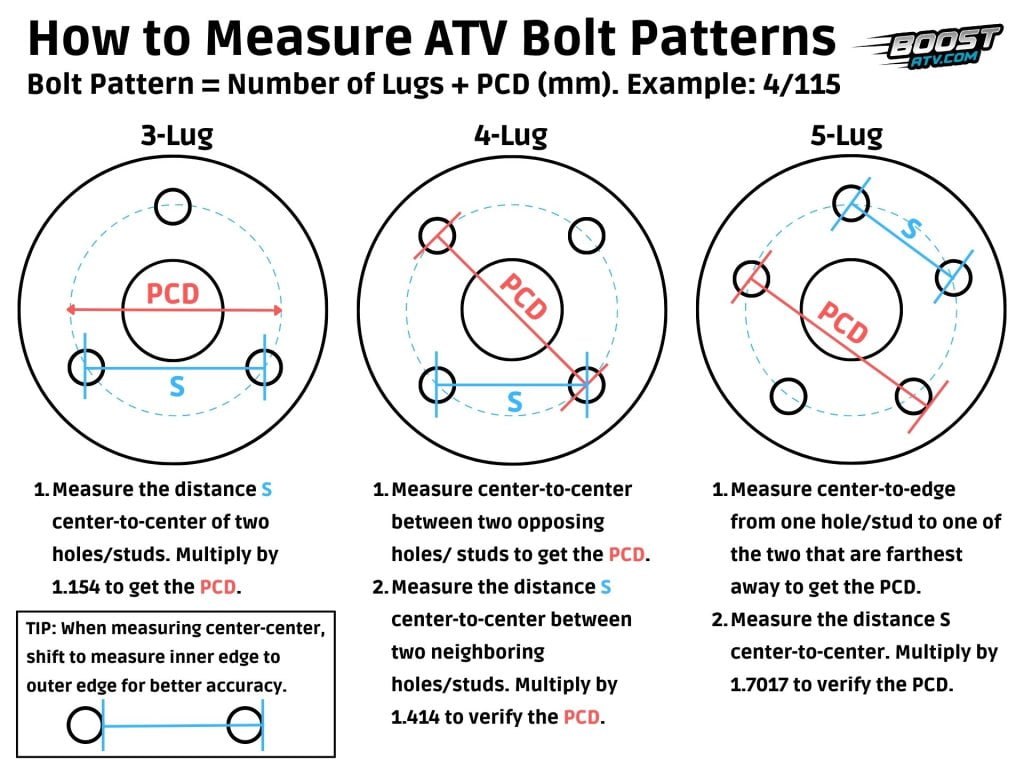Unlocking the Mystery of Lug Nut Spacing: A Comprehensive Guide
Ever found yourself staring at a wheel, wondering about the mysterious arrangement of those lug nuts? It's more than just a pattern; it's a crucial measurement for safe driving. Knowing how to determine lug nut spacing is essential for replacing wheels or buying new ones. This comprehensive guide will unlock the secrets of lug nut measurement, empowering you with the knowledge to make informed decisions about your vehicle's wheels.
Imagine this: you're on a road trip, and suddenly, you need to change a flat tire. You pull out your spare, only to discover that it doesn't fit! One of the most common reasons for this frustrating scenario is an incorrect lug nut pattern or spacing. Understanding how to measure this spacing can prevent such headaches and ensure you're always prepared for the unexpected.
Determining lug nut spacing might seem like a task best left to mechanics, but with a few simple tools and this guide, you can easily master it yourself. Whether you're a seasoned car enthusiast or a novice driver, knowing how to check lug nut spacing is a valuable skill that can save you time, money, and potential safety hazards.
The history of lug nut spacing is intertwined with the evolution of the automobile itself. As cars developed, so did the need for standardized wheel attachments. Over time, various patterns emerged, each designed for specific vehicle types and weights. Understanding this history gives us a deeper appreciation for the importance of accurate measurement and proper fitment.
The primary issue related to incorrect lug nut spacing is improper wheel fitment. A wheel with the wrong bolt pattern simply won't mount correctly, and forcing it can damage the wheel, the lugs, or even the vehicle's hub. Moreover, an improperly fitted wheel can come loose while driving, posing a serious safety risk. Accurately measuring lug nut spacing is crucial for preventing these potentially dangerous situations.
Lug nut spacing, also known as bolt pattern, is the diameter of an imaginary circle that passes through the center of each lug nut or bolt hole on a wheel. This is typically expressed as two numbers separated by an "x." For example, a common pattern is 5x114.3, meaning five lug nuts arranged on a circle with a diameter of 114.3 millimeters.
There are two main methods for determining the lug nut spacing. For wheels with an even number of lugs (like 4 or 6), measure the distance from the center of one lug nut directly across to the center of the lug nut opposite it. This is the diameter. For wheels with an odd number of lugs (like 5), measure from the back edge of one lug hole to the center of the opposite lug hole and multiply that measurement by 1.701 to get the diameter. You can also use a lug nut spacing tool, which simplifies the process.
Knowing the lug nut spacing brings several benefits: 1) Ensuring proper wheel fitment for safety and performance, 2) Confidently purchasing replacement wheels or spares, and 3) Avoiding potential damage to your vehicle caused by incorrect fitment.
To measure, first determine if you have an even or odd number of lug nuts. Then, use a ruler or caliper to measure accordingly. Double-check your measurements for accuracy. You can also compare your results to online databases or consult a tire shop for confirmation.
Advantages and Disadvantages of Measuring Yourself vs. Professional Help
| Method | Advantages | Disadvantages |
|---|---|---|
| DIY Measurement | Cost-effective, convenient, empowers you with knowledge | Potential for error, requires tools |
| Professional Help | Accurate, quick, no tools needed | Costly, requires a trip to a shop |
Best Practices: 1. Use a precise measuring tool like a caliper. 2. Double-check your measurements. 3. Consult reputable online resources. 4. If unsure, seek professional help. 5. Keep a record of your vehicle's bolt pattern.
Real Examples: A 2018 Honda Civic typically has a 5x114.3 bolt pattern. A 2020 Ford F-150 often uses a 6x139.7 pattern. These examples illustrate the variety of lug nut patterns across different vehicle makes and models.
Challenges: Difficulty measuring on corroded wheels. Solution: Clean the wheel surface first. Challenge: Uncertainty about the measurement. Solution: Consult a professional.
FAQs: What tools do I need? How do I measure an odd number of lugs? Where can I find my car's bolt pattern? What if my spare tire has a different bolt pattern? What happens if I use the wrong bolt pattern? Is there an app for this? Can I measure without removing the wheel? How accurate do my measurements need to be?
Tips and tricks: Use a digital caliper for greater precision. Clean the wheel surface for accurate readings. Consult your owner's manual for information.
In conclusion, understanding how to determine lug nut spacing is a crucial aspect of vehicle maintenance and safety. From ensuring proper wheel fitment to avoiding potential hazards, accurate measurement is essential. By following the steps outlined in this guide and utilizing available resources, you can confidently tackle this task yourself, empowering you with valuable knowledge and peace of mind. Knowing your vehicle's bolt pattern is not just about avoiding frustration on a road trip; it's about ensuring your safety and the proper functioning of your vehicle. So, take the time to learn this essential skill, and drive with confidence knowing your wheels are securely attached. Don't wait until a flat tire leaves you stranded; empower yourself with this knowledge today.
Unlocking va disability compensation your guide to financial wellness
Samsung phone ic replacement cost a comprehensive guide
Electrifying crossroads navigating the toyota rav4 plug in hybrid price in canada














